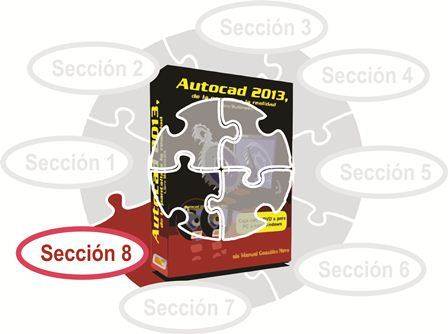3D Drawing with AutoCAD - Section 8

35.5 Navigation with the mouse
Once we have seen how to use some navigation commands such as orbit and pivot, among others, we can mention that an agile way to use them, even during the execution of a command of drawing or editing, is through the mouse in combination with certain keys .
It is actually the following combinations that you can easily test:
A) The wheel of the mouse, which is usually found among its buttons on the vast majority of models, zooms on the object when we rotate it. Moving forward, he draws him back. The framing of the object does not change in any way.
B) In itself, the mouse wheel is also a button that can be pressed and held in the same way that we usually use the right mouse button. In this case activate the framing tool.
C) If you press the SHIFT key and press the wheel button, the Orbit command is activated.
D) The CTRL key and the mouse wheel activate the Pivot command.
E) Shift + CTRL plus the mouse wheel is used to use anytime Free Orbit.
Put these combinations into practice, they will give you much agility to your drawing tasks.
35.6 Visual Styles
The visual styles determine the type of visualization that will be applied to the model. Strictly speaking, you can move from one style to another constantly without affecting objects in any way. As its name indicates, it will only have effects on the way in which its drawing is seen. Obviously, the type of visualization to use depends on the tasks you are performing on the model. For example, if you want to create an animation like the ones we've seen in this chapter, then you'd want to apply a realistic display style for the animation to have a better presentation. If you are analyzing the layout, you may want to see the edges of each object. In others, you may just want to quickly move over the drawing to analyze details and plan for new objects, and so you do not mind that the visual style is simple, so you should use the style called hidden.
If your computer has enough processing power and RAM capacity, then surely the visual style will be an irrelevant topic. If, on the other hand, your computer or the complexity of your drawings (or both) slow down your work, then you should think about when to use visual styles that consume more resources of your computer and when to use simpler visual styles, faster.
In any case, this is one of those very easy to use tools. Simply choose one of the existing visual styles, which in turn, in certain cases, can be combined with other options that are in the buttons of the same section (such as color modifiers) until you get the desired effect.
The visual styles manager is a palette where you can change the parameters of each style, to create adjustments to them. Its use, beyond curiosity, must be very sporadic.
We must point out that although there is an option in the Visual Styles section to apply materials and textures in realistic type views, this has nothing to do with the modeling of 3D objects (better known by the anglicism "rendering"), which is the process of assigning materials and lights to the models to obtain photorealistic images from them and whose study will be the subject of the last chapter of this guide.

